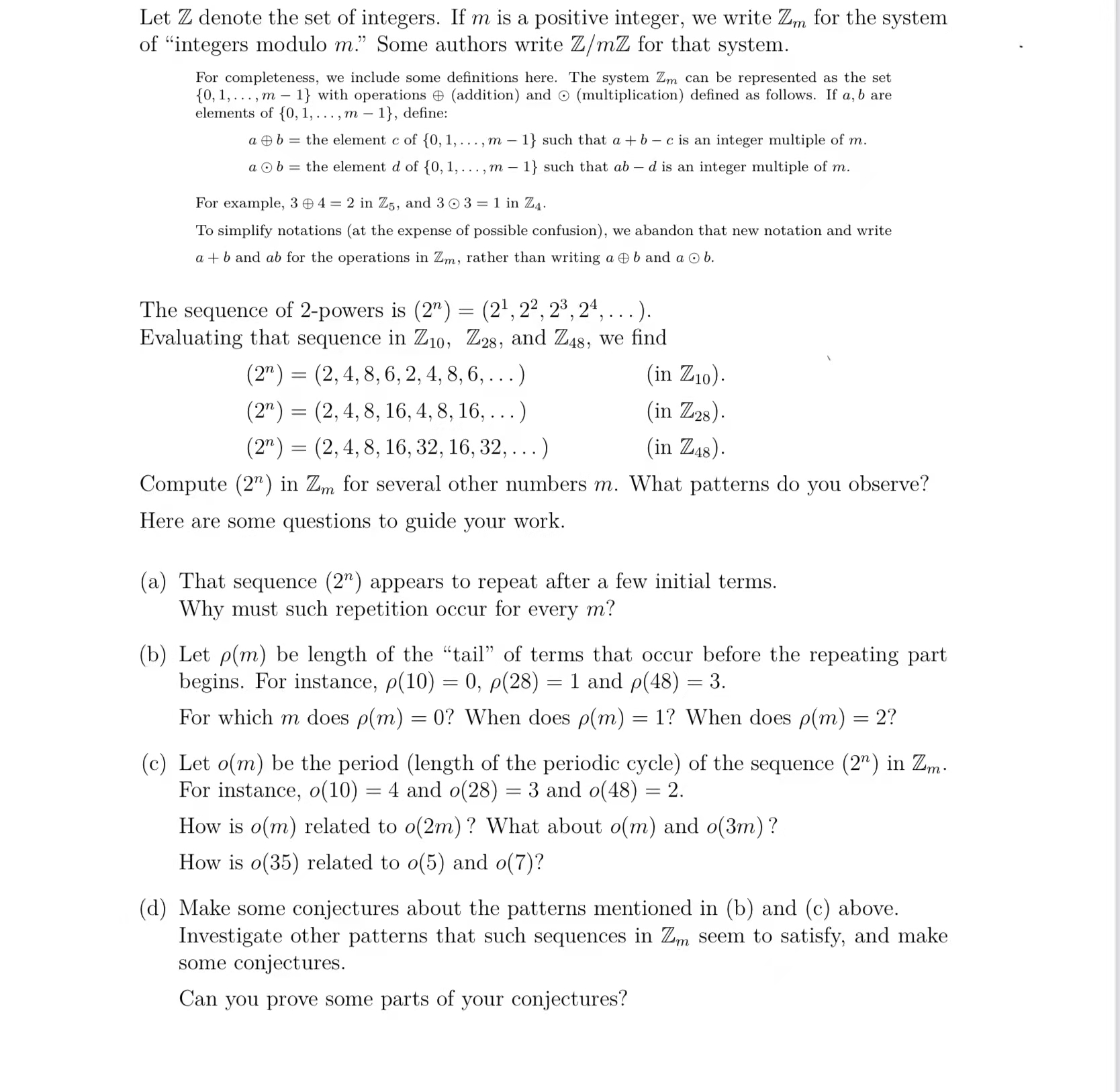Answered step by step
Verified Expert Solution
Question
1 Approved Answer
Let Z denote the set of integers. If m is a positive integer, we write Zm for the system of integers modulo m. Some

Let Z denote the set of integers. If m is a positive integer, we write Zm for the system of "integers modulo m." Some authors write Z/mZ for that system. For completeness, we include some definitions here. The system Zm can be represented as the set {0, 1, ..., m 1} with operations (addition) and (multiplication) defined as follows. If a, b are elements of {0, 1, ..., m 1}, define: ab the element c of {0, 1, ..., m- 1} such that a + b c is an integer multiple of m. a b = the element d of {0, 1, ..., m 1} such that ab- d is an integer multiple of m. For example, 34 = 2 in Z5, and 33 = 1 in Z4. To simplify notations (at the expense of possible confusion), we abandon that new notation and write a+b and ab for the operations in Zm, rather than writing a band a Ob. The sequence of 2-powers is (2") = (21, 22, 23, 24, ...). Evaluating that sequence in Z10, Z28, and Z48, we find (2n) = (2, 4, 8, 6, 2, 4, 8, 6, . . .) (2n) = (2, 4, 8, 16, 4, 8, 16, ...) (2n) = (2, 4, 8, 16, 32, 16, 32, ...) (in Z10). (in Z28). (in Z48). Compute (2n) in Zm for several other numbers m. What patterns do you observe? Here are some questions to guide your work. (a) That sequence (2n) appears to repeat after a few initial terms. Why must such repetition occur for every m? (b) Let p(m) be length of the "tail" of terms that occur before the repeating part begins. For instance, p(10) = 0, p(28) = 1 and p(48) = 3. For which m does p(m) = 0? When does p(m) = 1? When does p(m) = 2? (c) Let o(m) be the period (length of the periodic cycle) of the sequence (2n) in Zim. For instance, o(10) = 4 and o(28) = 3 and o(48) = 2. How is o(m) related to o(2m)? What about o(m) and o(3m)? How is o(35) related to o(5) and o(7)? (d) Make some conjectures about the patterns mentioned in (b) and (c) above. Investigate other patterns that such sequences in Zm seem to satisfy, and make some conjectures. Can you prove some parts of your conjectures?
Step by Step Solution
There are 3 Steps involved in it
Step: 1

Get Instant Access to Expert-Tailored Solutions
See step-by-step solutions with expert insights and AI powered tools for academic success
Step: 2

Step: 3

Ace Your Homework with AI
Get the answers you need in no time with our AI-driven, step-by-step assistance
Get Started


